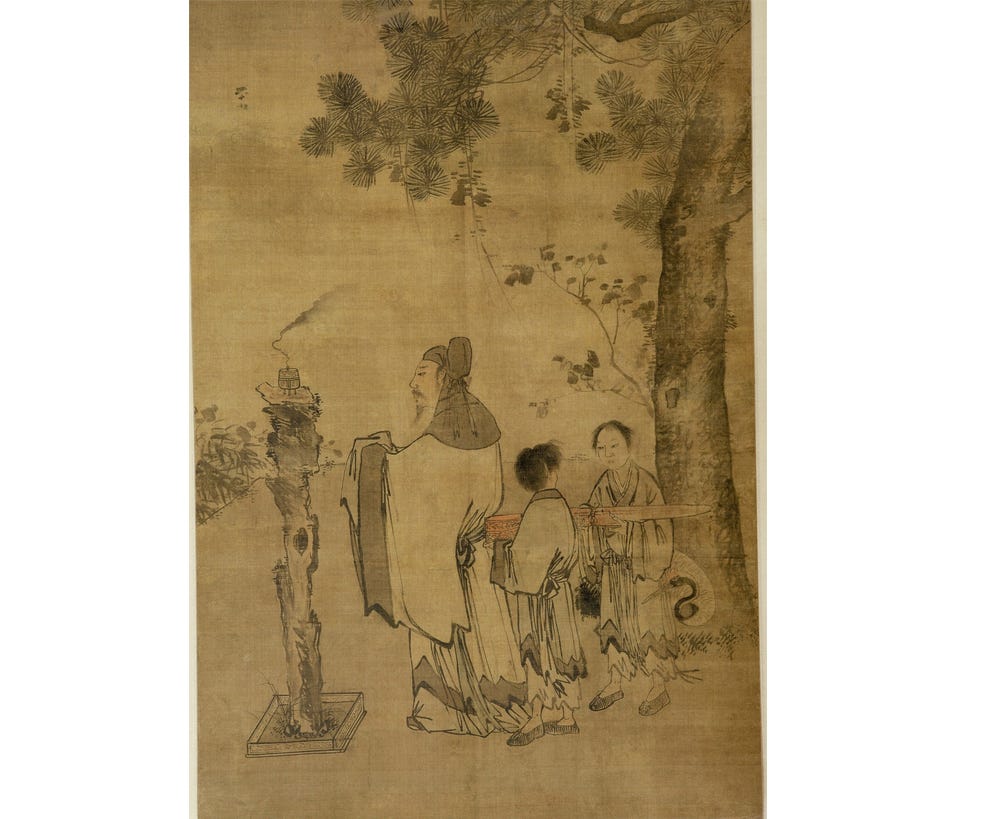Incense in Taoism — part 2
Share
Incense holds a profound symbolic meaning in Taoism. The rising smoke is believed to connect the earthly realm with the heavens, bridging the gap between the physical and spiritual worlds. By burning incense, practitioners create an atmosphere conducive to meditation, prayer, and ritual, enhancing their spiritual practices and deepening their connection with the divine.
In ancient Chinese Taoism, there were approximately ten types of incense used in various rituals and practices. Each type of incense had its unique properties and significance. We’ll talk about the rest in part 2.
5. 反生香 — Fansheng Xiang (Rebirth Incense): Represents renewal and transformation, aiding in spiritual growth.

Fansheng xiang, also known as “Fanhun Xiang” (返魂香), “Jingjing Xiang” (惊精香), or “Quesi Xiang” (却死香), is believed to be an ancient Chinese name for frankincense.
According to Song dynasty writer Ye Tinggui’s “Record of Famous Incenses,” it is said that “even those buried underground can be revived upon smelling it.”
6. 九和香 — Jiuhuo Xiang (Nine Harmonies Incense): Symbolizes completeness and unity, often used in significant ceremonies.
Jiuhe Xiang is an incense used in Taoist immortal legends. According to Song dynasty writer Hong Chu’s “Incense Manual,” quoting the “Three Caverns Pearl Bag,” it is described as: “Heavenly jade maidens hold celestial incense, using jade burners to burn Jiuhe Xiang.”

The rest four are “Fanfeng Xiang” (返风香), “Qise Xiang” (七色香), “Nifeng Xiang” (逆风香), and “Tianbao Xiang” (天宝香), each known for:
- Fanfeng Xiang (Returning Wind Incense): Known for its ability to create a peaceful and calming atmosphere.
- Qise Xiang (Seven Colors Incense): Used for its vibrant and diverse fragrance, representing harmony and balance.
- Nifeng Xiang (Against the Wind Incense): Burned to ward off negative influences and evil spirits.
- Tianbao Xiang (Heavenly Treasure Incense): Valued for its connection to the divine and used in sacred rituals.
According to Volume 5 of “Daomen Tongjiao Biyong Ji” by Song dynasty author Lü Taigu, they are referred to as “priceless famous incense offered to all the heavens.” Their origins and methods of preparation are not well documented.
Incense plays a vital role in Taoist practices, serving as a bridge between the mortal and divine realms. Its use in purification, protection, and spiritual enhancement underscores its significance in Taoist rituals. By understanding the various types of incense and their unique properties, practitioners can deepen their spiritual journey and foster a closer connection with the divine.
